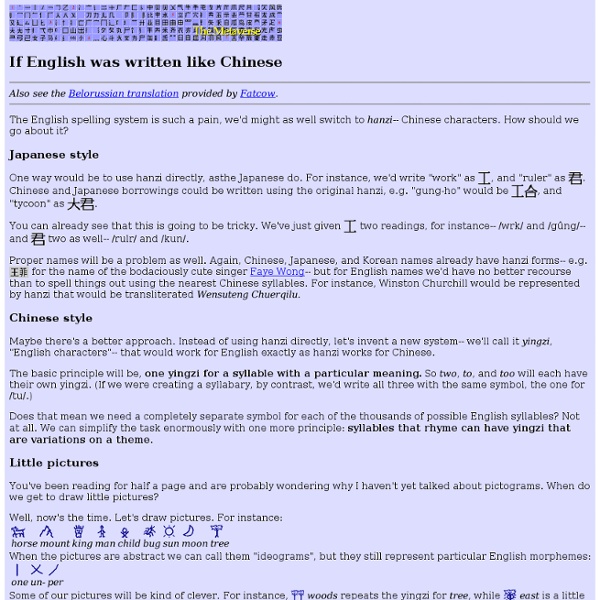Yingzi

The Economist explains: How do you invent a language?
MORE than 5m people now hear a few words in Dothraki or Valyrian, the fabricated languages spoken in the television series “Game of Thrones”, each week—more than the number who hear Welsh, Irish Gaelic and Scots Gaelic combined. From the unsung (Babm and Brithenig) to the celebrated (Esperanto and Elvish), constructed languages, in various states of completion, now outnumber the world’s natural tongues. Fantasy literature, science-fiction films and video games have fuelled a demand for otherworldly tongues—and fans increasingly expect them to be usable. So how do you invent a language from scratch? That depends on its purpose. These days most invented languages are created for artistic or aesthetic purposes, and often borrow features from existing tongues. Esperanto, the most successful invented language, may have as many as 2m speakers. • What else should The Economist explain?
Foreign Languages and Literatures | 21F.101 Chinese I (Regular), Spring 2006
Ancient Scripts: Home
FSI Chinese
Buy this domain. fsi-language-courses.com
iLoveLanguages - Your Guide to Languages on the Web
Gernreich alphabet
Gernreich is an alternative alphabet for English invented by Michael Carnright when he was 14. The letters are like building blocks which are connected together to make words, which in turn can be connected together to make sentences. Micheael usually uses graph paper to write this alphabet. Notable features The letters with the largest span from point to point are used for the most common letters in English. Gernreich alphabet Sample texts in Gernreich The texts on the right show a number of ways to write Gernreich, Michael Carnright's former family name. Transliteration All human beings are born free and equal in dignity and rights. If you have any questions about this alphabet, you can contact Michael at: gernreich@gmail.com Other alphabets invented by visitors to this site
Related:
Related:



